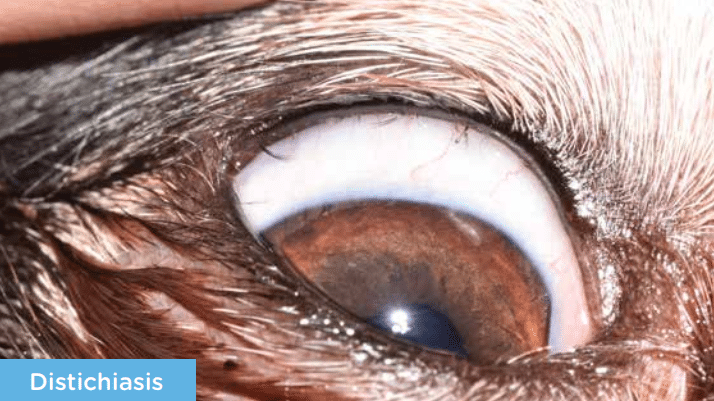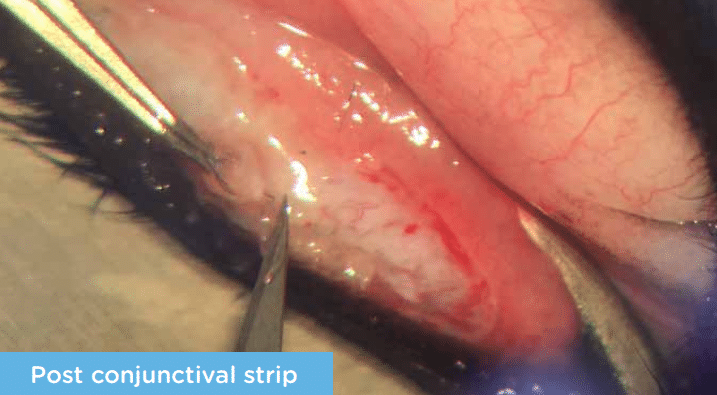Distichiasis
What is distichiasis?
Distichiasis is a medical term for abnormal growth of hairs along the eyelid margins.
What causes distichiasis?
The most likely explanation is a genetic cause. However the mode of inheritance is not clear.
Can both eyes be affected?
Yes, but usually not similarly.
Are any breeds predisposed?
Yes, the most commonly affected breeds include: American Cocker Spaniel, English Cocker Spaniel, Welsh Springer Spaniel, Cavalier King Charles Spaniel, Flat-Coated Retriever, Boxer, English Bulldog, Havanese, Shetland Sheepdog, Shih Tzu, Pekingese, Tibetan Terrier, Spaniel, Dachshund, Poodle, Jack Russell Terrier.
Does distichiasis always cause problems?
No, in the majority of cases distichiae are incidental findings of no clinical significance. However in some cases, the hairs can cause irritation of the surface of the eye (cornea), in which case surgery is recommended. The significance of distichiasis in your dog will be assessed during the initial consultation.
What treatment options are there for distichiasis?
There are several treatment options for distichiasis, all of which require surgery. Even though simple plucking of the hairs in the consultation room may be performed in order to assess the clinical relevance of distichiasis, it is not a permanent solution, since the remaining root will continue to produce a new hair within a matter of a few weeks. Surgical treatments to resolve the problem include: excision of the roots of the distichiae, freezing inside the eyelids to damage the roots of the distichiae, use of low voltage electric current to destroy the base of the distichiae. In our practice, we tend to surgically remove the roots of the distichiae under microscopic magnification under general anaesthesia.
Can distichiasis return after surgery?
Since we can only remove the roots of hairs which are visible, there is a risk of further development of distichiasis adjacent to the hair follicles which have been removed. However the risk of recurrence is lower in dogs older than 2-2.5y, since distichiae tend to develop in the early years of life.


